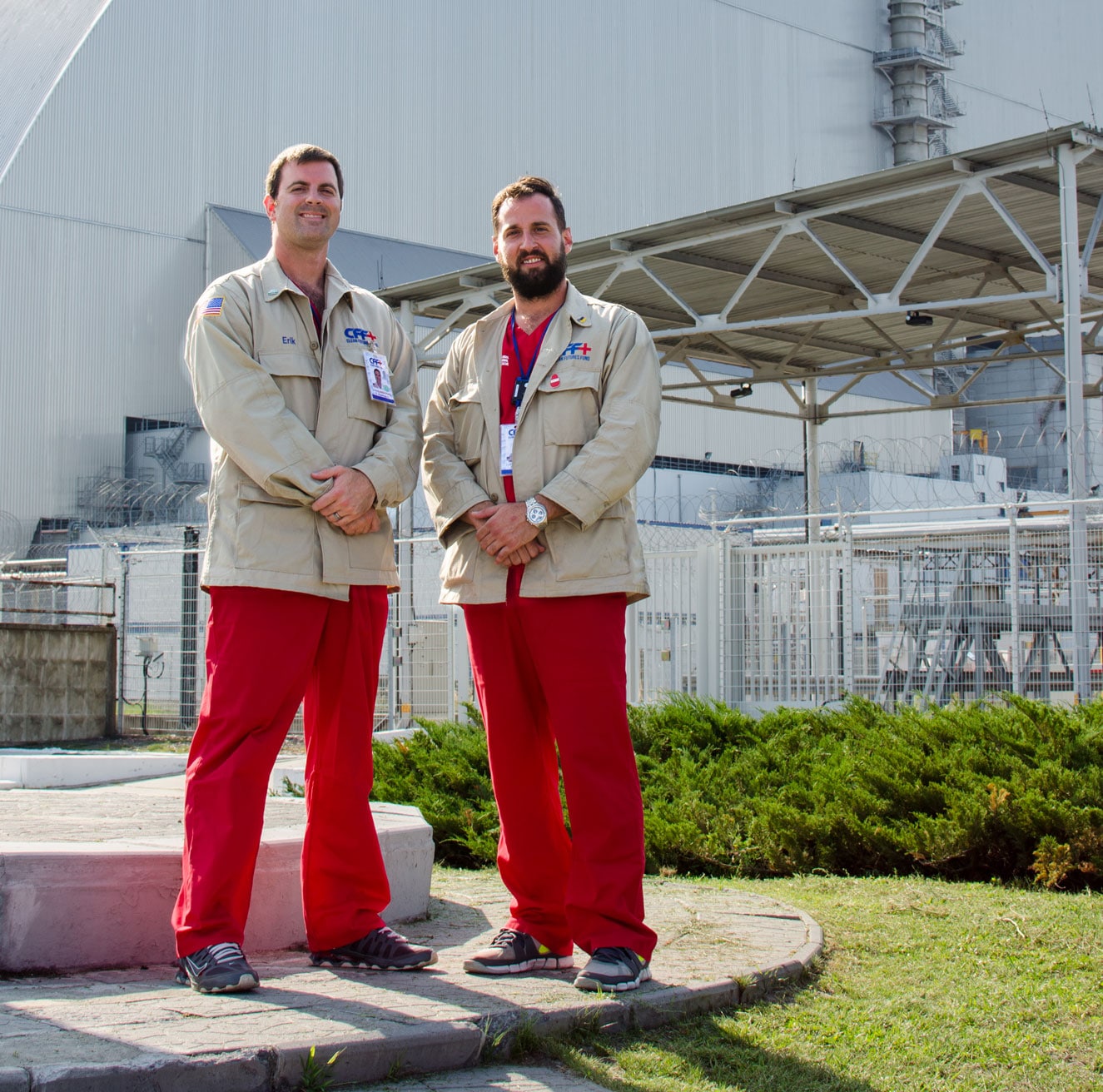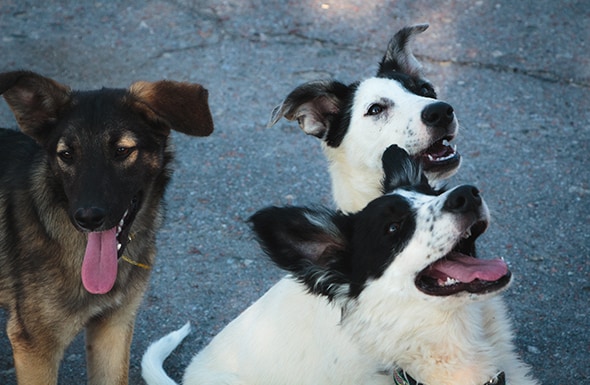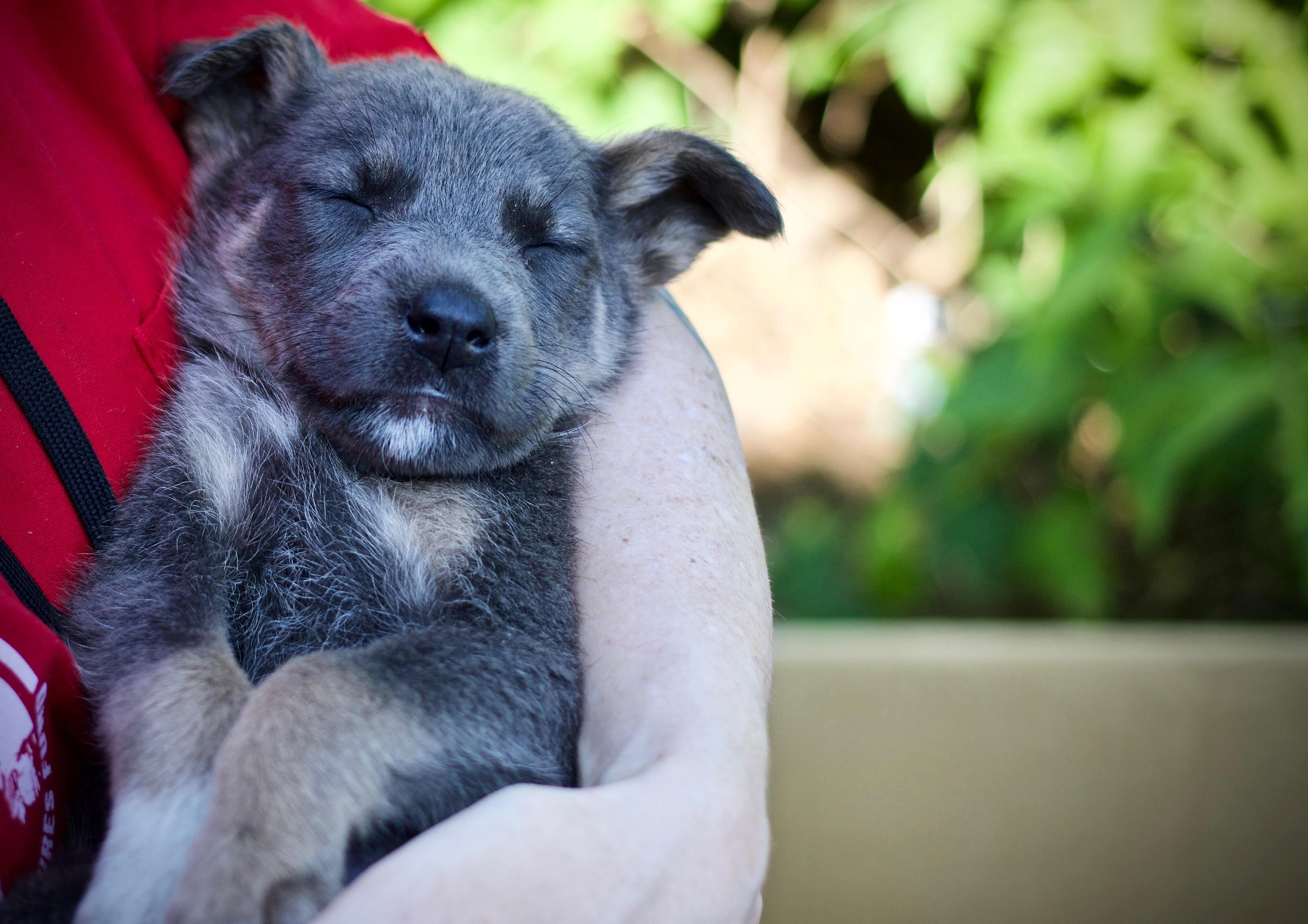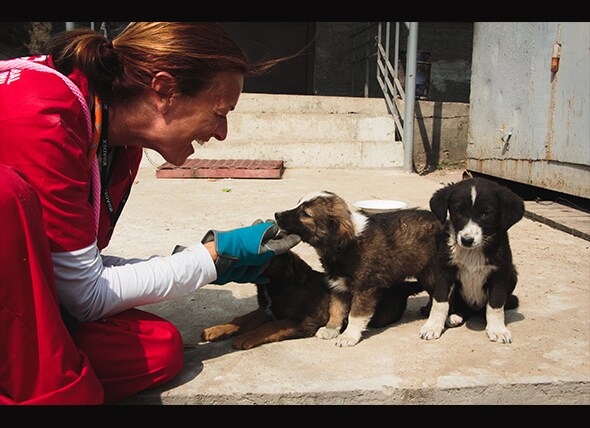The Dogs of Chernobyl: A Story of Tragedy and Hope.
The Chernobyl Nuclear Power Plant is not a place most people associate with life. When one of its reactors exploded in 1986, it released radioactive material into the atmosphere, creating one of the most catastrophic nuclear disasters recorded in history.
The Chernobyl animals have survived for over three decades, in large part because of the Ukrainian plant workers who’ve provided them with care. With its Dogs of Chernobyl program, the Clean Futures Fund, a small nonprofit that provides international support to regions impacted by industrial accidents, is offering the dogs a chance at a brighter future—and is even succeeding at shifting long-held attitudes about animal adoption.
Hundreds of Stray Dogs
When Lucas Hixson first arrived in Chernobyl in 2013 as part of an international vocational exchange program for radiation and emergency response professionals, the last thing he expected to see was hundreds of stray dogs running wild.There are currently about 950 feral dogs living in the Exclusion Zone, a 30-kilometer range established to restrict access to areas contaminated by the Chernobyl nuclear disaster. About 90 percent of these dogs tend to congregate near people: at checkpoints, fire stations and nearby villages.
Since the dogs have been exposed to rabies, this is a dilemma. “These dogs rely on humans for food; there is a lot of interaction, and with this interaction comes the risk of transmission of disease.”
Solutions haven’t come easily, however. “When I came over, I started to see that there were many areas where relief could not be provided. When you have a disaster like this, it’s so costly that what funds do come in go to the problem, not the people.”

The Clean Futures Fund, co-founded by Hixson and Erik Kambarian, has begun to fill this void. “We try to make up for some of the things that fall off the table or that go unaddressed, and the dogs are one of them. We are an international human organization that happened to identify the need of these animals and to put together an animal welfare program to address that need.”
By providing better care and quality of life for the dogs, they also reduce risks to the workers and tourists who interact with them.
A Strong Bond Between the Dogs and Workers
There’s no difference between a Chernobyl dog and an American or European dog, says Hixson. “They’re dogs. They love people. They love attention. They love love. And you get what you put into them. What you show them, they show you back 10 times.”In the years since the Chernobyl disasters, the Ukrainian plant workers have cared for the dogs, despite their own limited means. (By American standards, the average Ukrainian salary is about 180 dollars a month, he says.)
“I know workers who would pay out of their own pockets for vaccines or medicines if they saw a sick dog. But there’s no way they could provide care for the whole population,” says Hixson. Without the workers, these dogs would be facing a different reality.
Hixson witnesses positive interactions and displays of kindness on a daily basis. “Even the workers have their own little packs of animals. For example, one woman named Nadia would take care of eight dogs who lived around the Control Building where she worked on a daily basis. She fed them; she paid for their vaccines out of her own pocket.”
Hixson believes it’s essential to preserve these bonds. “It’s a very powerful relationship not only for the dogs, but also for the humans.”
Keeping the Chernobyl Dogs Healthy
The Clean Futures Fund is focused on keeping the number of dogs to a manageable size. The larger the population becomes, the less available dog food there is, the more troublesome interactions the dogs have with wolves and other predators, and the more potential for the transmission of disease.“Our goal is to keep people safe and dogs healthy,” says Hixson. “By providing medical care, we’re able to reduce that risk and allow the workers and the tourists to continue this necessary interaction
that the dogs require to keep them alive.”

Their sterilization and vaccination program, administered with the help of SPCA International, has advanced this goal. Once a year, they bring over veterinarians, technicians and volunteers from around the world (including the Ukraine, United States, Germany, Austria, Switzerland, Lebanon, Mexico, Canada and the Philippines) who provide care for as many dogs as possible. Along with veterinary care and sterilization, they also provide the stray dogs with feeding stations and radiation monitoring.
“This is a big undertaking. This is what we work all year for. So when you see us doing our fundraising, these are the things we’re fundraising for. So we’re able to bring these volunteers over, to buy our medicines, to buy our medical supplies, to be able to provide this care for the local dog population,” says Hixson. To donate to their organization and support their work with the dogs of Chernobyl, you can go to their Clean Futures Fund website.
For Puppies, the Goal Is Adoption
Attempting to socialize older dogs so they can adjust to new homes can cause them stress, Hixson says. “For many older dogs, sometimes the best thing you can do is make sure they have the best quality of life in the conditions they’re most comfortable in, and allow them to live out their natural lives as happily as they can.”The priority for the puppies, however, is rescue and adoption. “With the puppies, we have this incredible opportunity to be able to rescue, treat them and find them forever homes. This not only reduces the population in the Zone but is also the best option for quality of life for these puppies.”

Puppies remain at a shelter for six to eight weeks, where they receive routine medical care, socialization, vaccination and sterilization. The shelter, which currently houses about 15 puppies, is staffed by personnel around the clock.
The team’s goal is to match puppies with the best homes possible, whether that may be in Europe or the US. The puppies are adopted before they ever leave the Ukraine. The dogs must pass strict requirements before they get approval to leave; this is especially critical since the dogs can have radioactive residue in their coats.
Finding forever homes for dogs in the Ukraine is not always straightforward, however. “Going to a shelter and adopting a dog is not the first thing most people in the Ukraine think of when getting a family pet. In the Ukraine and other countries in Eastern Europe, they really have a puppy mill mentality. Most people, when they want a dog, they want a purebred dog, and they go to a breeder or a puppy store.”
Hixson empathizes with the challenges that American shelters face. “I don’t want to add to that or take away from that. So for us, we’re happy to have them in our shelter, because we can work with them every day.”
The Challenges of Rescuing Dogs in Chernobyl
Catching feral dogs can be daunting, especially in a place like Chernobyl. “You don’t see buildings because they’re all obscured by trees and brush. And for dogs, it offers ample places to hide and relocate. Sometimes we’re catching dogs in an urban setting; sometimes in the woods. Each of these environments creates special conditions we have to react to.”
Puppies remain at a shelter for six to eight weeks, where they receive routine medical care, socialization, vaccination and sterilization. The shelter, which currently houses about 15 puppies, is staffed by personnel around the clock.
The team’s goal is to match puppies with the best homes possible, whether that may be in Europe or the US. The puppies are adopted before they ever leave the Ukraine. The dogs must pass strict requirements before they get approval to leave; this is especially critical since the dogs can have radioactive residue in their coats.
Finding forever homes for dogs in the Ukraine is not always straightforward, however. “Going to a shelter and adopting a dog is not the first thing most people in the Ukraine think of when getting a family pet. In the Ukraine and other countries in Eastern Europe, they really have a puppy mill mentality. Most people, when they want a dog, they want a purebred dog, and they go to a breeder or a puppy store.”
Hixson empathizes with the challenges that American shelters face. “I don’t want to add to that or take away from that. So for us, we’re happy to have them in our shelter, because we can work with them every day.”
In the relatively short time Hixson and his team have been in the Ukraine, they’ve made progress on different fronts. Currently, close to 40 percent of the dogs in the Zone have been vaccinated for rabies, primarily in areas where the highest interactions between people and the stray dogs occur.
Hixson’s future plans are even more ambitious. “This year by the time we get out, we’re hoping to have over 80 percent of the total population vaccinated. We’re in the middle of a five-year program, and by the end of the program, not only will 100 percent of the dogs inside the Zone be vaccinated, but we’ll also have a buffer zone.”
There are other signs of progress. “Today I met with the general director of the Power Plant, and he issued a powerful story. There was one dog—I don’t know if he felt cornered—but he lashed out at a worker, was barking and making his presence known. The worker got out of there and obviously left the dog alone. But the supervisors went back and were able to see that this dog had been vaccinated and sterilized, and they didn’t have to worry if that dog would bite.” Hixson explains that they were able to this because, "We use ear tags to identify which stray dogs have been vaccinated and which ones have not. That allows simple visual identification, which is necessary when working with such a large population of stray dogs."
Hixson’s team relies on professional dog catchers to capture the animals as efficiently and humanely as possible. They use both mechanical and chemical capture methods—whichever is least stressful for the particular dog. One of their partners, Helping Paws Across Borders, provides eight professional dog catchers with experience in mechanical capture. They also have a veterinarian-led team who performs chemical capture when needed.
Without the help from the local people who know these dogs the best, the situation would be dire. “We have to work closely with the workers to find out where the dogs are and which ones we’ve already treated. To get in and get out without their assistance would be nearly impossible.”
It’s not always easy to determine a dog’s vaccination status, plus acquiring vaccines can be difficult, so the stakes are even higher. The Ukraine gets their rabies vaccines for humans from Russia, but because of the conflict, they have not received an adequate supply for about six years.
And last summer, while getting on the train to head to the Power Plant, Hixson was approached by the Director of Site Security. “Nine times out of 10, when that guy comes up to you, you’ve done something wrong and you’re about to get it. And he walked up to me, and I was immediately concerned—I didn’t think we’d done anything wrong. And he shook my hand and he said, ‘Lucas? Thank you. I can’t thank you enough for what you’ve done,’ and he grabbed my hand and he put this little porcelain dog in it. I turned the dog over (which he painted himself) and saw there was a number on the bottom, and it was his dog. And I knew this dog. And I looked again and he had painted this little porcelain dog to look just like this dog. And he said, ‘I hope you always remember what you’ve been able to do here.’”
Attitudes about rescue and adoption are also starting to shift. “Not just in Chernobyl, but in Kiev, Lviv and Odessa, people are talking about this, and it’s starting a new conversation, and it’s starting to grow legs. And I think that through this program, we’re giving people another option that they didn’t think about before.”
For a place that’s been forgotten with time, Chernobyl is teeming with life, humanity and hope. “There’s so much to learn here, not just about how to treat each other, not just about how to approach life and the curveball, but how to do it with grace. And that is represented in how they treat these animals. It is with respect and it is with grace, and I wish that the rest of the world had as much respect for each other and for life as I see here”.

.jpg)
No comments:
Post a Comment